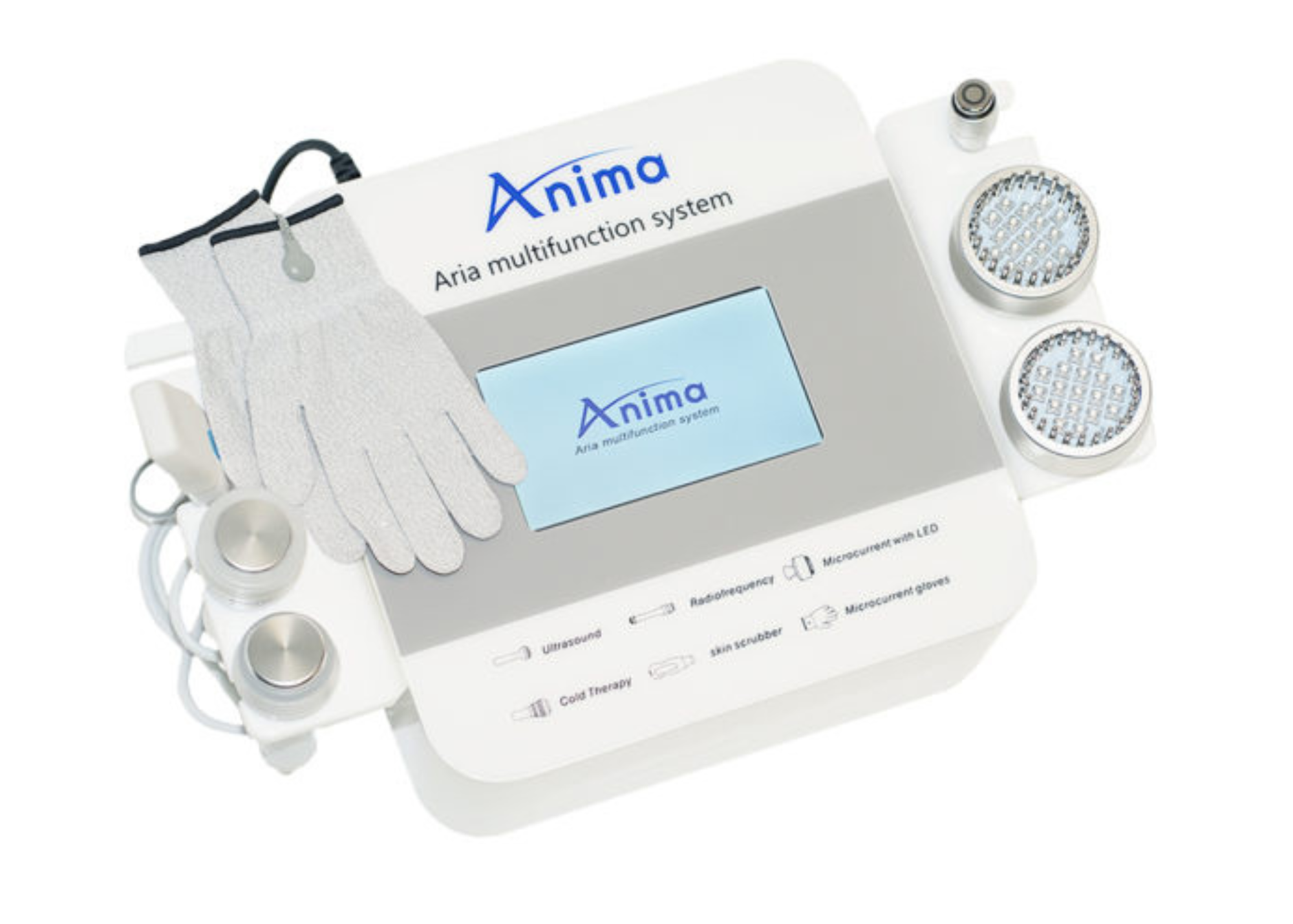Needling and nutrition should be looked at as mutually beneficial to the skin.
I’ve had microneedling on my menu since 2010 when I learned about Lance Setterfield’s Concise Guide to Microneedling. Dr. Setterfield explained the science of how microneedling works and addressed best practices. I was hooked! A non-laser (Everything was ‘laser’ in 2010) device that created consistent and predictable changes in the skin. Microneedling has been an aesthetic game-changer on many levels. It’s a client favorite for low downtime, effective results for a variety of skin conditions. It’s a practitioner favorite for a great return-on-investment service that clients love with minimal risk.
US Microneedling Market
Every time I think the US microneedling market is saturated, new statistics reveal its continued growth. In 2020 the market was valued at $472 million dollars. Yes, you read it right. $472 MILLION! Experts in aesthetics trends predict an almost 8% increase in the next five years. They credit the growth in the market to an increasingly aging population who prefer minimally invasive procedures over surgery to maintain a youthful appearance and the word-of-mouth satisfaction of those who have had microneedling. [1] And, microneedling’s fairly low price point in comparison with aesthetic laser treatments and surgery, makes it a consumer favorite.
The end of the COVID pandemic isolation shifted the viewpoints of consumers. A survey of more than 1000 women by the American Society of Plastic Surgeons reports that the majority of women are more interested in non-surgical options than pre-COVID-19.[2]

DermaJEM
Perfect Advanced Treatment Room Companion
Using the DermaJEM Aria in your treatment room, you’ll be able to calm, cool, and soothe skin with the Cold Therapy. You’ll be able to remove masks and clean skin with the Skin Scrubber. You can easily improve product absorption with UltraSound.The LED Light Therapy and Microcurrent are modalities that really don’t need any explanation! Their benefits are universally understood throughout the skin care industry. Finally, the Radiofrequency will give you the ability to treat skin laxity for clients who are looking to firm and lift.
“I created the Aria so that estheticians could have a limitless variety of modalities that they could add to any treatment that included hydrodermabrasion using the Element. I wanted to make sure they could easily create an unforgettable experience for every client.” Elizabeth Camacho, Co-Founder of DermaJEM.
The National Institute of Health also reports that microneedling treatments on the face significantly improve wrinkles, skin laxity and improve texture after only 90 days and 150 days of the first treatment with little downtime, pain, or discomfort. The controlled wounding that occurs with microneedling sets up the body’s natural wound-healing cascade, releasing platelet-derived growth factors. Microneedling also aids in the absorption of topical skincare products and induces the production of collagen.
The Needling and Nutrition Connection
With the continued popularity of microneedling, you can give your clients additional support with the recommendations of improving their diet both pre-and post-treatment to optimize healing and minimize downtime. You aren’t a dietician so you need to recognize that you can give generalized, community accepted standards for nutrition, and not specifically tailored diets. Let’s look at some common nutrients that help with healing. By reading food labels, your client can create a diet that will maximize their recovery.
Protein / Amino Acid Connection
Protein repairs tissues, fights infection, and helps in carrying oxygen throughout the body. Recovering from microneedling is going to put a demand for more protein in your client’s body. A typical man needs 56 grams of protein and a woman needs 46 grams of protein.
Foods high in protein include chicken, yogurt, beans, and lentils.
Amino acids are the building blocks of protein and play a large role in repairing tissue. Arginine is an amino acid that increases oxygen and blood flow to the injured area. This stimulates collagen production and helps in reducing inflammation. Dairy products like milk and cheese are high in arginine. Glutamine is another amino acid that supports the immune system. Chicken, fish, cabbage, spinach, dairy, lentils, and beans are high in glutamine.
Micronutrients
Micronutrients are nutrients needed in small but critical amounts for proper functioning of the body at any time, but especially when it is being stressed from injury and working to repair itself. Vitamins A and C and zinc are three of the most important for wound healing. Additional micronutrients included Vitamin E, Vitamin B, copper, iron, and magnesium.
Vitamin A stimulates fibroblast activity, which produces collagen and elastin. Your client can find Vitamin A in orange and yellow vegetables and dark leafy greens.
Vitamin C has anti-inflammatory properties as well as the ability to fight free radicals from cell damage. Vitamin C is found in citrus, berries, spinach, and broccoli.
Vitamin E is also anti-inflammatory and works synergistically with Vitamin C. It keeps the cell walls strong and can widen blood vessels, leading to greater blood flow and oxygen delivery to the area undergoing healing. Your client will include spinach, broccoli, salmon, and other fish, along with nuts and seeds for a diet rich in Vitamin E.
Vitamin B3 restores cellular energy and repairs damaged DNA. A diet with Vitamin B3 will include mushrooms, potatoes, legumes, whole grains, meat, fish, eggs, and dairy.
Copper is essential for healing, partnering with Vitamin A to help in the production of collagen and elastin and boosting the function of antioxidants to fight free radicals. Seeds, nuts, mushrooms, and soybeans are rich in copper.
Iron is required for the creation of red blood cells and is an integral part of hemoglobin. Hemoglobin allows oxygen to be delivered to the body and also is involved in the formation of collagen. Iron is present in nuts, legumes, spinach, broccoli, oats, tofu, and in fortified grains.
Magnesium is a mineral that is vital for the function of many body systems. It must be in balance in the body for digestion and for cardiac support. Magnesium lowers cortisol levels and helps to stabilize hormonal imbalances and improve cellular processes. Your client will find magnesium in nuts and seeds, spinach, legumes, avocados, whole grains, and dark chocolate
Zinc is a necessary mineral for healing after an injury, helping with inflammation and contributing to new cell formation in repairing the wound. Zinc is present in meats and shellfish, legumes, seeds and nuts, dairy products, eggs, and whole grains.
Most people today think of carbohydrates as a dirty word, knowing they break down into sugars and glycation causes skin aging. But glucose is converted into ADP, adenosine triphosphate, the cellular energy used in the healing process. Healthy carbohydrates are minimally processed whole grains, bananas, sweet potatoes, quinoa, and berries.
Healthy fats are another essential nutrient for tissue regrowth, wound healing, and reduction in inflammation. Salmon, avocados, nuts, seeds, and eggs are healthy fats.
You can see from this list, a healthy diet for healing contains a variety of whole foods, not processed foods. Everything that your clients consume impacts their bodies’ ability to function. Your client’s healing process is dependent on the body being fueled by a balanced diet that creates the strongest healing environment.
Spending time in the consultation prior to the microneedling session to discuss your client’s nutritional needs is a valuable part of the post-treatment care plan. Increasing your knowledge of nutrition and its role in healing will build your holistic approach to esthetics.

Contribution by Mary Nielsen
A technician, educator, mentor, and business owner, Mary Nielsen has been at the forefront of medical esthetics since its infancy in the early 1990s. She is a Certified Advanced Esthetician in the State of Oregon and a Master Esthetician in Washington. She is a licensed esthetics instructor. She is also a licensed nurse. She served as the Vice Chair and Industry Expert on the Oregon Board of Certified Advanced Estheticians. She is the author of A Compendium for Advanced Aesthetics, a Guide for the Master Esthetician, and Fearless Beauties, Treating Skin of Color with Confidence. She has authored four chapters in the newest Milady Standard Esthetics textbook released in May 2019. She is also a diplomate with the American Board of Laser Surgery in Cosmetic Laser Procedures. She is the Executive Director of Spectrum Advanced Aesthetics, the founder of the Cascade Aesthetic Alliance as well as the OG of Fearless Beauties.

